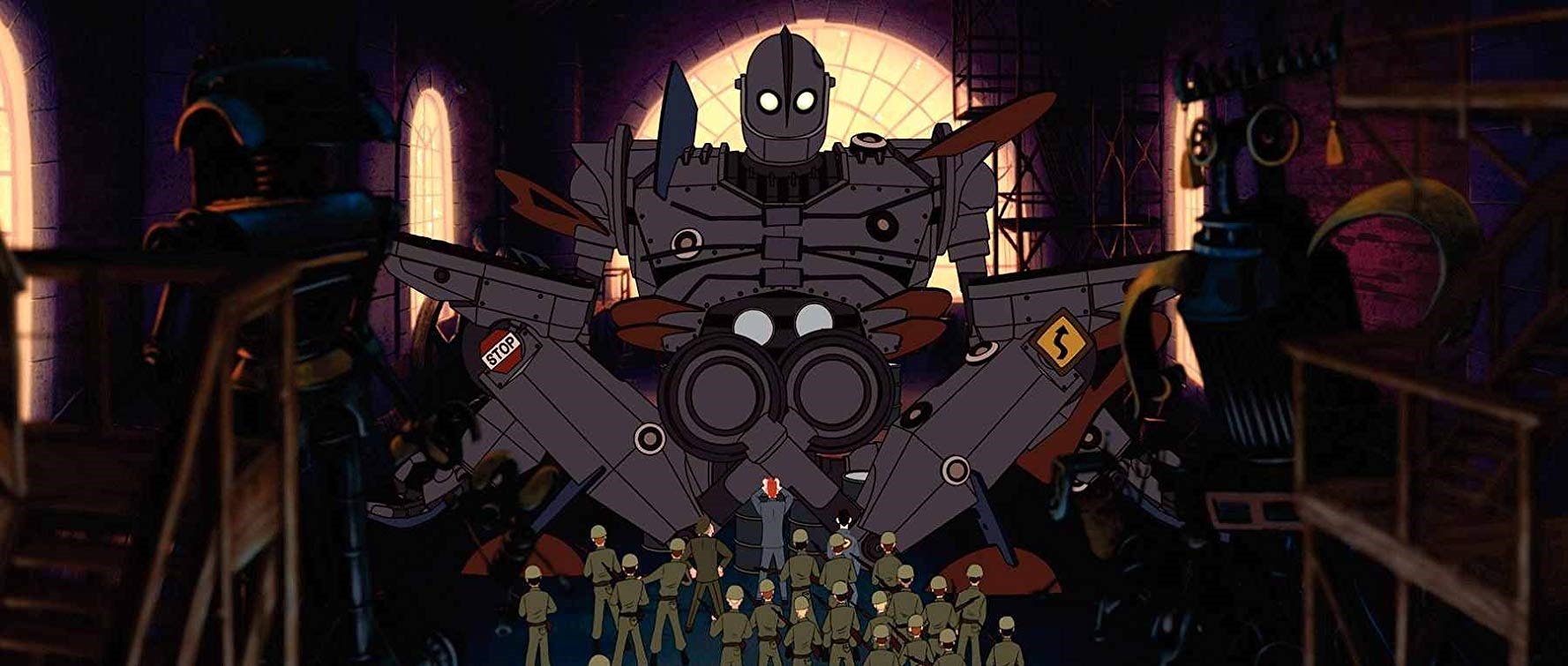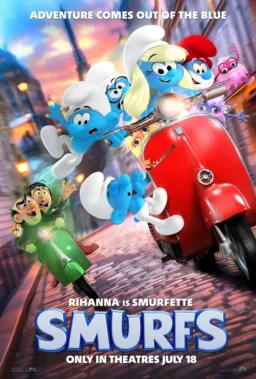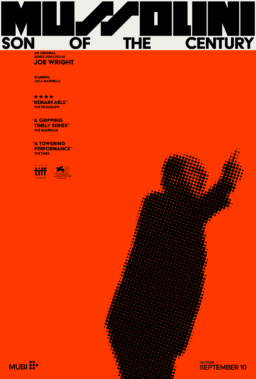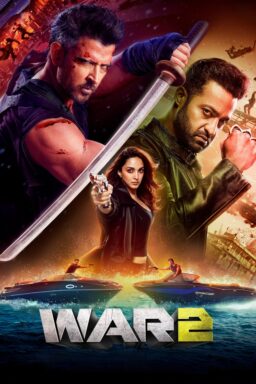Over the last few years, various films have been re-released in South Korean theaters, and I was delighted by the opportunity to watch some good movies again on the big screen. I did not hesitate at all when I could watch “Yi Yi” (2000) at a decent arthouse movie theater in my hometown Jeonju, and I was quite impressed again by those memorably chilling moments of “The Silence of the Lambs” (1991) and “No Country for Old Men” (2007). I am now eager to revisit “Blood Simple” (1984), which is being currently shown in South Korea at this point, and “Maurice” (1987), which will be re-released here around next month.
One of the films recently shown again in South Korean theaters is “The Iron Giant,” the first animated feature film by Brad Bird. It was previously released here in May 2000, but the film did not receive much attention just like when it was released in US in the previous year. To be frank with you, I came to learn of its existence only after coming across an enthusiastic four-star review from a local movie critic named Djuna several years later. (Although they’ve remained anonymous for many years, Djuna has been one of the most dependable South Korean movie critics in addition to writing a series of fabulous science fiction stories, and I must say that this person’s numerous movie reviews taught and influenced me as much as Roger Ebert and Leonard Maltin).
Not long after I entered the screening room of a local multiplex movie theater, my memories of the film were quickly refreshed right from its very first shot, and I admired again its superb mix of style and substance. Sure, the story may look simple and familiar on the surface, but it is presented quite well with humor and poignancy, indirectly delivering messages to muse on. Furthermore, the film still looks great, brimming with mood and details to be savored, and it never feels dated at all with its timeless qualities.

Set in a small coastal town of Maine in 1957, the movie begins with a premise not so far from “E.T. the Extra-Terrestrial” (1982). During one dark and stormy night, a big, mysterious entity crashes down into the sea, and the entity in question turns out to be a humongous robot coming from the outer space. It disappears shortly after being witnessed by a scared local fisherman, but, on the next night, it happens to draw the attention of Hogarth Hughes (voiced by Eli Marienthal), a smart and perky nine-year-old kid who has lived with his young widow mother in their cozy house on the fringe of the town. Once he notices something strange going on outside his house while his mother Annie (voiced by Jennifer Aniston) is absent due to her work, Hogarth bravely ventures into a nearby forest, and he soon comes to behold the robot as it attempts to eat some metal from a certain facility in the forest.
Although their first encounter is not exactly pleasant, Hogarth meets the robot again on the next day, and the film depicts the beginning of their unlikely friendship with humor and tenderness. After discerning that the robot is not as threatening as it seemed at first, Hogarth teaches it several things including how to speak, and, to his delight, the robot is eager to learn and become his best friend. He has always wanted to have a pet to befriend and play with, and now he gets his wish in a way beyond his imagination.
Thanks to Dean McCoppin (voiced by Harry Connick Jr.), a kind beatnik artist who also runs a local junkyard, Hogarth gets a temporary shelter for his friend. But, of course, the situation has already become quite serious with the arrival of Kent Mansley (voiced by Christopher McDonald), an arrogant and obnoxious federal government agent who comes to the town to investigate what the aforementioned local fisherman said he saw at that night. Although he is understandably skeptical at first, it does not take much for him to realize the possibility of an unknown threat to his country and government, and, as your average Cold War paranoid, he becomes quite determined to eliminate it by any means necessary.
Briskly and smoothly advancing from one narrative point to another along with its main characters, the film pays considerable attention to its mood and style. Evoking the paintings of Norman Rockwell and Edward Hopper in its intimate and nostalgic presentation of a small New England town in late autumn days, the film is strewn with numerous recognizable period details such as a bunch of comic books shown to the robot by Hogarth at one point, and it also throws sharp, humorous jabs at the dark sides of its background period. As mainly reflected by Agent Mansley’s frequent neurotic behaviors, American society during that time was churning with paranoia due to the increasing political tension between the US and Russia. One of the most amusing moments in the film comes from a brief scene where Hogarth and his classmates watch a silly education film on a certain kind of national emergency.

The film is also interesting in its eclectic animation style. As a cell animation film, it is clearly reminiscent of those classic animation films of Don Bluth and Hayao Miyazaki for its painstaking efforts on rich backgrounds and details, but Bird and his animators also used computer graphic animation for drawing the robot. Looking as alien as required but being seamlessly incorporated into cell animation, the robot in the film never feels like merely being tacked on the screen, and that is one of the main reasons why the climactic action sequence later in the story powerfully works amidst lots of actions.
Above all, we are amused and touched by how the friendship between Hogarth and his robot friend is developed. As they get connected more with each other step by step, the screenplay by Bird and his co-writer Tim McCanlies, which is based on Ted Hughes’ acclaimed children’s book The Iron Man, deftly swings back and forth between comedy and drama, and I particularly appreciate how it organically delivers its anti-gun message during a certain key scene clearly influenced by “Bambi” (1942).
As a matter of fact, during the pre-production stage of his film, Bird presented the story to those executives of Warner Brothers as saying “What if a gun had a soul, and didn’t want to be a gun?”, and he and his animators did a commendable job of making the robot look as if it really had heart and soul inside its metallic appearance. It may look a bit too obtuse on the surface at first with the thick, ponderous voice performance of Vin Diesel, but it gradually becomes as endearing as the robot hero of “Wall-E” (2008). Like Wall-E, it comes to learn much from the better sides of humanity, and it’s really moving to see how it overcomes its inherent nature, and then chooses to do what should be done for Hogarth and many others in the end. Compared to it, those big ugly robots in “Transformers” (2007) and its abominable sequels are nothing but disposable metal objects.
At this point, it is rather hard to believe that, despite lots of praise, the film was a big commercial failure during its theatrical release. Mainly due to the insufficient promotion from Warner Brothers, which was not so eager about another attempt to catch up with Disney after the disastrous failure of “Quest for Camelot” (1998), the film did not draw enough attention from the audiences, and then it was quickly overshadowed by more commercially successful films like “The Sixth Sense” (1999). At least, it has steadily risen during last 20 years as more loved and admired than before, and it still remains as the best achievement in the fruitful career of Bird, who subsequently gave us “The Incredibles” (2004), “Ratatouille” (2007), and “Mission: Impossible – Ghost Protocol” (2011).
Overall, “The Iron Giant” is a superlative work full of spirit and imagination as well as heart and soul, and it grew on me more after I watched it again at my residence. In short, this is indeed one of the best animation films of all time, and it should be watched by more audiences out there.











